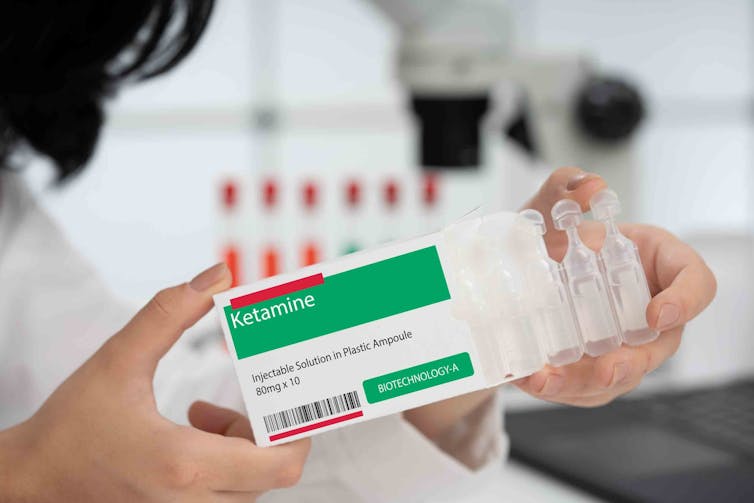Millions of people worldwide were left devastated by the death this year of 54-year-old Matthew Perry, the Friends star famous for bringing wise-cracking Chandler Bing to life. A global superstar, recently sober with an autobiography on the bestseller lists, it looked like his troubled past was behind him. So the world was especially shocked and saddened to learn of his untimely death by apparent drowning.
This week, medical officials in Los Angeles, have confirmed that his drowning was more complex than initially suspected. Toxicology reports have indicated that two drugs were in Perry’s system at the time of his death. These were buprenorphine, a drug used to treat opioid drug addiction, and ketamine, sometimes referred to as special K or horse tranquilliser.
Given Perry’s well-documented addiction issues to opioid painkillers, his use of buprenorphine was not a surprise. But why was he taking ketamine?
Ketamine works by acting on receptors in the brain and, since its synthesis in the 1960s, has been used in veterinary medicine and also as a surgical anaesthetic in humans.

Following signs that ketamine might affect user mood, it was investigated for its potential role in treating depression and anxiety. Today, users can be prescribed ketamine for these conditions, but usually only after other antidepressant and anti-anxiety medications have failed.
The medical officer in LA specified that Perry was being legally prescribed infusions of ketamine to treat depression and anxiety. They did note, however, that given the time since his last dose, it was unlikely that the ketamine in his bloodstream was from his prescribed infusions. No other reason was offered as to why he would have had ketamine in his system so close to the time of his death.
In addition to finding drugs in his body, Perry was also listed as having heart disease. Ketamine can cause an increase in blood pressure and heart rate, so it is not surprising to hear from the medical examiner that: “At the high levels of ketamine found in his post-mortem blood specimens, the main lethal effects would be from both cardiovascular overstimulation and respiratory depression.”
Another contributing factor to Perry’s death was listed as drowning. So does ketamine make drowning more likely?
Ketamine can cause users to have issues with coordination, and they may feel disorientated. The combination of these effects while in water, can make a person’s reactions slower, putting them at risk of harm, so ketamine certainly could make drowning more likely.
Also, taking ketamine with other substances, like alcohol, can increase the risk of drowsiness. While Perry had a much-publicised issue with alcohol, his toxicology report indicated no alcohol in his system at the time of his death.
Not the first
Sadly, Perry is not the first Hollywood star to die by drowning under the influence of drugs. In 2012, global star Whitney Houston died in a bathtub after consuming marijuana, cocaine, and the benzodiazepine known as alprazolam (Xanax).
These stories remind us all of the dangers of substance abuse and the importance of seeking professional help for addiction issues.
Matthew Perry was a vocal advocate for more addiction support services, and since his death the Matthew Perry Foundation has been set up to help those struggling with the disease of addiction.
Perry said: “When I die, I don’t want Friends to be the first thing that’s mentioned, I want helping others to be the first thing that’s mentioned. And I’m going to live the rest of my life proving that.”
In the last years of his life, he did just that. But sadly, it seems that it will be in death that he will have the biggest impact on helping others to overcome their demons.


